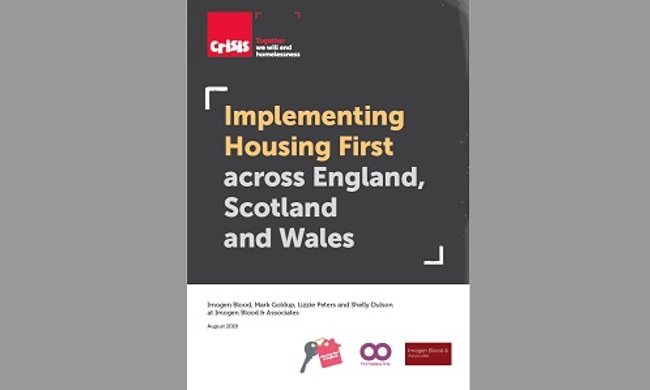Implementing Housing First across England, Scotland and Wales (2018)
10.10.2018
The Housing First model and the ethos on which it is based is simple yet radical; it works precisely because it hands choice and control, rights and responsibilities back to homeless people. It is ultimately a relationship based approach to change, yet its success also depends on access to stable and affordable housing and the ability to draw in from a wide range of services the personalised support that the individual needs, as far as possible, when and in the format in which they choose it.
Key Findings
This piece of work was jointly commissioned by Crisis and Homeless Link to review and analyse existing evidence in order to identify what is needed to support the implementation of Housing First across Great Britain. A key part of this commission has been to undertake secondary analysis of existing datasets to estimate the size of the cohort for Housing First.
Using existing literature and policy documents, 20 in-depth interviews and bespoke analysis to define the current Housing First cohort, key findings from the report include:
- Housing First is still in its infancy across Great Britain but has been gathering strong political backing across England, Scotland and Wales to differing scales.
- There is clear consensus amongst researchers and practitioners that Housing First is effective for homeless people who have high, multiple and complex needs. Interviewees agreed it should be targeted at those who no other housing approach has worked or is likely to work. There is less definitive evidence about how the model.
- If implemented at scale tomorrow the research estimates the Housing First cohort across GB would have a lower estimate of 18,400 and higher estimate of 32,500.
- Housing First can only work if suitable housing can be identified and accessed. A stable base, choice and security of tenure are central to putting the principles into practice. Practitioners were in agreement that building trust and relationships with private and social landlords was essential to enabling a supply of suitable local properties.
- There are currently very localised approaches to housing supply for Housing First which is supporting small numbers of people. If scaled up there would need to be greater investment in new supply with a view to using both new and existing stock for Housing First. Significant national commitment to housing development is an essential part of this.
- Current practice is helping to reduce barriers related to welfare reform but if the UK Government is serious about rolling out Housing First the Department for Work and Pensions should review its exemptions policy in relation to Shared Accommodation Rate, benefit cap, welfare conditionality and sanctions to include Housing First alongside other groups of people experiencing homelessness.
- If Housing First is implemented at scale it will require significant changes to cross commissioning and funding models to give support providers, tenants and landlords enough confidence that the support will not be time limited.
- More widely there needs to be a consistent understanding of what is (and is not) Housing First which could be supported by a national method of accrediting the model and strong national leadership to provide strategic oversight of Housing First in each nation.
Reference
Blood, I., Goldup, M., Peter, L. and Dulson, S. (2018) Implementing Housing First across England, Scotland and Wales. Imogen Blood & Associates. London: Crisis and Homeless Link

